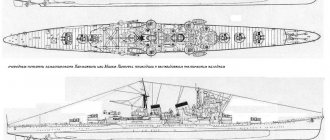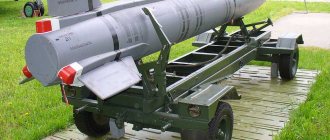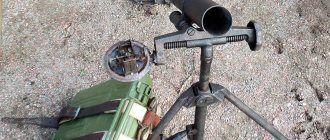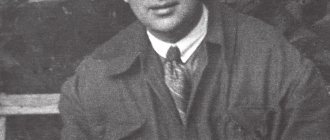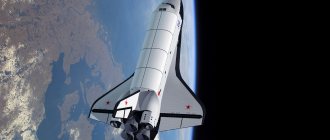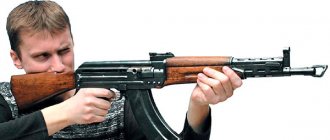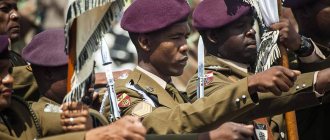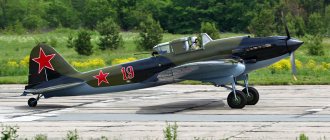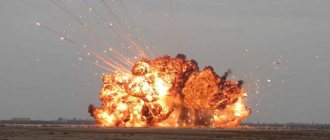During his lifetime, this man was known only to a few dozen secret scientists, major politicians and military men like himself. Today he is invariably included in the top ten greatest people of the 20th century - according to all Russian sociological surveys. His very fate resembles a novel, either a fantasy or an adventure. On January 12, on the 115th anniversary of the birth of Sergei Pavlovich Korolev, Izvestia remembers the great scientist, thanks to whom humanity went into space.
Soaring record
Renaissance: 2022 was a breakthrough year for Russian space
Which projects were implemented for the first time in the world and which ones resumed after a long break?
Sergei Korolev was born on January 12, 1907 in Zhitomir, in the family of a teacher of Russian literature. At the age of five, he first saw an airplane flown by the legendary pilot Sergei Utochkin. This day determined the boy's fate. He read a lot about flights, about aircraft, and then he began to create them himself, making friends with the pilots of the Odessa hydraulic squad.
At the Bauman School, which Korolev graduated from in 1926, he was already considered a talented aircraft designer. But after becoming acquainted with the works of Konstantin Tsiolkovsky (there is a legend that Korolev managed to personally meet the great Kaluga hermit), space became his dream. In September 1929, Sergei Korolev and Sergei Lyushin presented an unusual glider at the all-Union competition in Koktebel - as heavy as a tank. Korolev himself lifted the car into the sky and set a soaring record, staying in the air for more than two hours.
In the hungry 1920s, he dreamed of interplanetary travel. And even then there were people nearby, without whom a breakthrough into space would have been impossible. And first of all, Valentin Glushko, the future academician and creator of the engines that launched the King’s rockets into orbit.
Photo: TASS/Peter Maslov
Rocket plane RP-318 designed by Sergei Korolev with rocket engine Valentin Glushko
First models and prototypes of other countries
The next stage in the exploration of outer space is a flight to the Moon. For this purpose, NASA created the Saturn 5 launch vehicle. Designer: Wernher von Braun. From 1969 to 1972, these missiles made 6 flights. In 2022, Saturn V continues to be the largest rocket in the world. This applies to all characteristics: size, weight, load capacity and power. The rocket is capable of delivering a payload weighing 141 tons into low-Earth orbit.
From 1981 to 2011, NASA used Shuttle-type transport ships in near-Earth space. The first space rockets with solid rocket boosters were used to launch them into orbit. The shuttle was equipped with 3 liquid fuel engines and two rocket boosters.
Returned from Kolyma
Korolev vs. Musk: secret projects of the USSR propose to be digitized
Creating twins of Soviet rockets, ships and satellites will help get ahead in the space race
In 1933, Korolev was appointed deputy director of the Jet Research Institute. Missile systems for the Red Army were created there, supervised by “Red Marshal” Mikhail Tukhachevsky. Korolev spent part of the allocated funds on unplanned experiments that did not produce results. This, according to the canons of that time, was regarded as sabotage, as political sabotage.
In the summer of 1938, the 31-year-old designer was arrested. The journey through torment began: Butyrka prison, then a gold mine in Kolyma, general work. Only in 1940 Korolev was transferred to a special NKVD prison, “sharashka” TsKB-29. There, major scientists under the leadership of aircraft designer Andrei Tupolev (also arrested) worked for the defense industry. All of them were legally imprisoned, but in tolerable conditions.
Photo: wikipedia.org
The first photo after the arrest. Butyrka prison. 1938
In 1943, Korolev became the chief designer of rocket launchers at the Kazan Sharashka. He was released only in 1944, and a year later he was already leading the development of the first Soviet ballistic missile R-1. The Americans managed to capture the rocket scientist Wernher von Braun, who created the “weapon of retribution” for Hitler. It was he who became, in fact, the creator of the American missile program. Korolev had to work on his own; as trophies of the USSR, only a few German developments on Vau shells were received. But already in the early 1950s, Korolev was half a step ahead of the Americans.
Where billionaires are flying: what will 2022 be remembered for in the space industry?
Non-professionals and Chinese often enter orbit
“And the volleys of a thousand guns merged into a prolonged howl...”
Like most of the great inventions of mankind, rocketry owes its rapid development to the military. One of the first uses of rockets as weapons occurred at the end of the 18th century, during the colonialist battles of the British.
At first, Indian soldiers tried to use them. The British successfully improved the unexploded samples and also began to use them for military purposes. Now this first rocket weapon can be seen in the British Museum.
The very first
We owe the conquest of space to the requirements of the country's defense: it was necessary to create a means of delivering a nuclear charge to the territory of the alleged enemy. Such a means was the “seven” - a unique development by Korolev and his associates, which for several years ensured the world priority of Soviet cosmonautics. The world's first intercontinental missile, the R-7, surpassed its American counterparts in flight range and, no less important, in reliability. Its tests took place in the summer of 1957. And on October 4, the first artificial Earth satellite in history entered orbit. Thus began the space age.
Korolev, like few other scientists, knew how to communicate with managers, with generals, with the heads of the largest Soviet departments. This is not an easy art. But he found a common language with Dmitry Ustinov, and with Alexei Kosygin, and with Nikita Khrushchev, and with Leonid Brezhnev. The main representative of the army and the state in Korolev’s entourage was the legendary pilot, one of the first Heroes of the Soviet Union, Colonel General Nikolai Kamanin, whom the first cosmonauts called their flying dad. They often argued and even clashed, but they did not lose mutual understanding.
Photo: TASS
The first artificial Earth satellite, launched on October 4, 1957
Korolev was never timid in high offices - and for this he was respected. But, of course, this is not the only secret of the academician. The main thing is character, determination, the ability to take risks at the right time and compromise at the right time. Young colleagues suggested taking the chance and equipping the first satellite with sophisticated technology. But Korolev understood: the most important thing is to take the first step without failure. On October 4, a simple spacecraft with a radio transmitter went into space, which sounded throughout the world.
Planetary invasion: scientists have figured out how to start colonizing Mars
Where and what kind of microorganisms can be introduced that will make the composition of the soil and atmosphere more suitable for life?
Even before the launch of Sputnik, Korolev sometimes spoke under his own name at conferences. After the breakthrough into space, this became impossible. Foreign colleagues could only guess who became the father of world astronautics.
Serial production of the R-2 missile
In September 1949, a new type of rocket, R-2E (experimental), . This was the first domestic model made according to a new design scheme.
Over the two autumn months of 1949, 5 launches of this rocket were carried out, which confirmed the operability of systems and assemblies, the reliability of the design, and the correctness of the initial theoretical premises. In the period 1950 – 1951, 30 flight development launches of the R-2 rocket were carried out, of which 24 were successful. The rocket's reliability was 80%.
On November 27, 1951, the missile system with the R-2 missile was put into service. In 1952, 14 launches of serial R-2 missiles manufactured at the Dnepropetrovsk Rocket Plant (the predecessor of Yuzhmash) were carried out at the test site. The reliability of serial missiles was 86%. The development of the R-2 missile system and systems, made according to a new design scheme, laid the foundation for further missile systems.
No matter how pathetic it may sound: these events were the first steps of our country on the path of space exploration. What’s especially nice is that these steps were taken independently.
Pragmatic romantic
Chief Designer - that's what they called him in the newspapers. Colleagues called him SP behind his back - this was considered the highest degree of respect in rocket circles. Regalia was not a priority for Korolev. He did not accept the status of “general” and did not dream of the Nobel Prize, which he could not receive because he remained secret. The chief designer was quite happy with his own small “kingdom” - in Podlipki near Moscow, where rocket scientists from top scientists to workers settled. A research and production center was located there, in which Korolev’s word was worth its weight in gold. Scientists are ambitious people, and it is not easy to become an undisputed leader among them. And there were legends about Korolev. And about how he placed a bugler at the launch of the first satellite, and about how he resolved the dispute about the surface of the Moon - is it hard or like a pillow. There was no exact information then. And the chief designer took a sheet of paper and wrote large: “The lunar surface is hard. Korolev." At one's own risk.
Photo: RIA Novosti
Sergei Pavlovich Korolev with a dog before launching it into space
Cosmonaut and scientist Konstantin Feoktistov wrote about the chief designer: “The most characteristic feature of Korolev is his enormous energy. He knew how to infect those around him with this energy. He was a very determined man, often quite stern. Korolev is a fusion of rationalism and dreaminess.” Many people remember the stern disposition of the Chief: it happened that papers were scattered throughout his office. But when it came to the most important decisions, he patiently listened to all opinions.
Take off, weapons: what kind of rocket did Russia test in space?
The Ministry of Defense emphasizes that the debris of the destroyed satellite does not pose any threat to the ISS.
Significance of the invention
Over the course of 2,000 years, rockets have evolved from toys and military weapons into sophisticated machines capable of carrying people and cargo into space. Now they have come to mean the same thing as other vehicles - the ability to explore the world beyond Earth.
Interestingly, the rocket is no more difficult or expensive to build than a modern transatlantic jet. By comparison, the Airbus A330-200F aircraft is capable of carrying a payload weighing 65 tons, and its creation costs $200 million. At the same time, the Falcon Heavy rocket has a payload capacity of 53 tons and costs $90 million.
Man in a spaceship
With the light hand of Korolev, the world learned several new Russian words - starting with “sputnik”. One day, at the end of 1960, the academician gathered his employees for a secret meeting: he organized a competition for the best name for a manned spacecraft. Options rained down: “rocket plane”, “starship”, “spacecraft”... And Korolev said: “Let’s call the cabin “spaceship”. Everyone laughed - does this vessel look like a ship? But then everyone admitted: Korolev was right. This word reminded us of the Earth, of great journeys along the seas and rivers. Today it seems to us that this concept has always existed. A spaceship - what could be more natural?
Photo: RIA Novosti/Alexey Sverdlov
Last parting words from Chief Designer Sergei Korolev to Yuri Gagarin before the launch. Baikonur Cosmodrome, April 12, 1961
Changing Pirs: why the ISS needed another module
Why he will spend two days in flight before docking with the station
He dreamed of becoming the first interplanetary traveler. He was not afraid of risk, he was even ready to stay in orbit forever - just to complete this breakthrough. It didn't happen. When the time came to prepare for the first manned space flight, Korolev felt that young aviation aces needed to be selected for this role. In the USA, Wernher von Braun relied on the experience of future astronauts, and in the Soviet Union youth won. The most fearless and strong junior officers were selected for the first cosmonaut detachment. Our cosmonaut No. 2 German Titov is still the youngest person to have been in space.
Before the launch on April 12, 1961, Korolev told Gagarin via radio: “Be calm about everything. See you in Moscow." Their dialogue became a thread that the first cosmonaut held on to both during takeoff and in the most difficult moments of descent. No one then could accurately determine the strength of cosmic overloads. They took a step into the unknown - and won.
Photo: RIA Novosti
The first detachment of Soviet cosmonauts during a vacation in Sochi, 1961
The chief designer called the cosmonauts eagles, while Gagarin was invariably called by his first and patronymic names, although he was 27 years older. By the way, an amazing coincidence: on March 9, 1934, the day when Yuri Gagarin was born in the village of Klushino, Smolensk region, Korolev wrote a report on the human rocket flight into the stratosphere, which became the basis of his first printed work.
